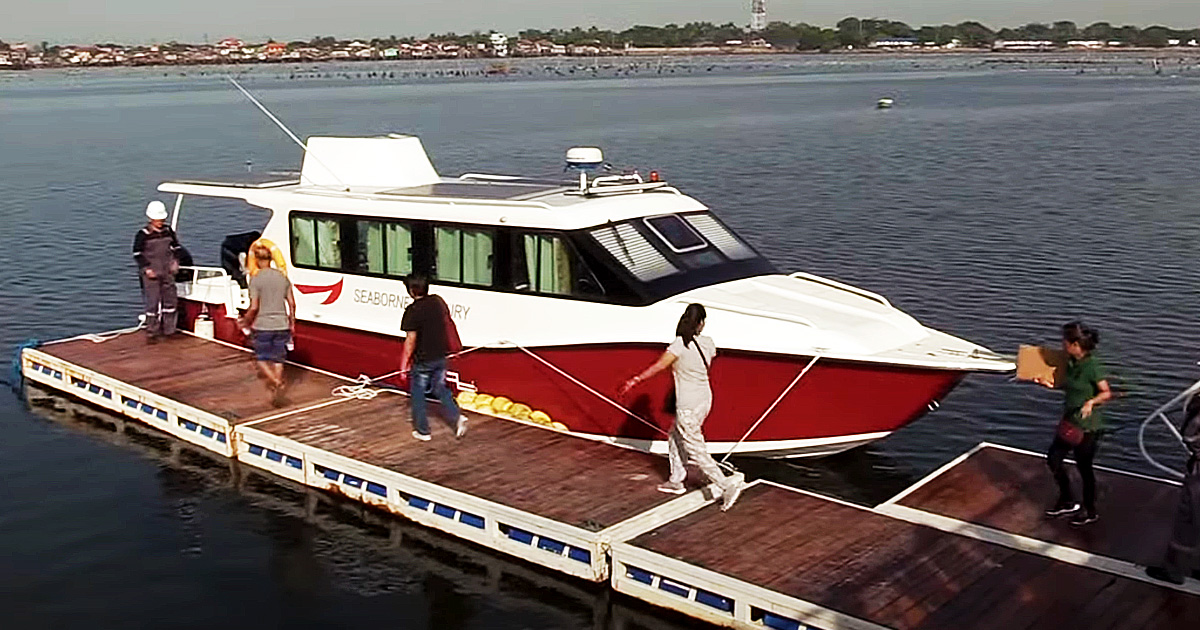With the launch of the so-called water jeepneys, it is now possible to travel between Manila and Cavite in 15 minutes to an hour. A typical land trip can take up to three hours one way, depending on traffic conditions. The Department of Transportation‘s (DOTr) Secretary Arthur Tugade and the Maritime Industry Authority are currently discussing route expansions for these water jeepneys. Routes from Naic, Sangley, and Tanza in Cavite to SM Mall of Asia in Pasay will be added upon approval.
Why Water Jeepneys
Without a doubt, traffic congestion is one of the country’s most serious problems today. Metro Manila alone is ranked second-worst in the world for traffic congestion, trailing only the Indian city of Bengaluru. Despite the Philippines’ diverse public transportation options, commuters and motorists remain trapped in metro-wide traffic. A daily occurrence for millions whose livelihoods are dependent on city travel.
As a result, the government has been committed to reforming the Philippine public transportation system. The launch of the Public Utility Vehicle Modernization Program in 2017 demonstrates this, as it enables the DOTr to explore public transportation alternatives, resulting in the gradual rise of “water jeepneys.”
Making Water Jeepneys “Mainstream,” Literally
Residents of Cavite can look forward to reduced traffic hours of three to four hours following the recent launch of the Cavite – Manila Ferry Service, the concept of which was heavily inspired by Cebu’s “water jeepney” concept. The ferry service promises commuters a travel time of between 15 minutes and an hour, a significant reduction in comparison to the three to four-hour land transit from Cavite to Manila.
The program was implemented through collaborative efforts between the Department of Transportation (DOTr), the Philippine Coast Guard (PCG), the Philippine Ports Authority (PPA), and the Maritime Industry Authority (MARINA).
The MB Mercury, with a seating capacity of 27, operates between Cavite and the Cultural Center of the Philippines (CCP), while the MV Island Sabtang, with a seating capacity of 57, operates between Cavite and Lawton.
Water jeepney fees will range from 160 pesos to 200 pesos depending on the route. In addition, children, students, senior citizens, and people with disabilities are eligible for special offers and discounts.
Terminals are located near the Cavite City Hall on the way to the CCP port in Pasay and near the Manila Liwasang Bonifacio (Lawton).
Reviving Maritime Transportation For The Masses
Copenhagen, Hong Kong, and Singapore have demonstrated that ferries can effectively connect waterfront zones and areas without access to mass transit, thereby reducing overall street traffic. According to Norman Garrick, a University of Connecticut professor of Civil and Environmental Engineering, maritime transit relieves pressure normally handled by land-based transport by serving transit “deserts” such as abandoned waterfront industrial zones and complementing on-land transit systems.
Despite being marketed initially as a tourist-oriented ferry service, the twenty-year-old Paris Batobus serves primarily as a congestion-alleviating mode of transport, removing an estimated one million passengers from the streets. Additionally, approximately 18,000 office workers in Nigeria saved over 24 hours of daily travel time following the launch of Metroferry, which allows them to travel from Lagos, Nigeria to the other side in less than 30 minutes.
Apart from convenience, establishing maritime transit as the norm may have less tangible consequences, one of which is the luxury of relaxation provided to passengers. This is something that is difficult to obtain given the country’s complicated land transportation systems.
Modernizing Public Transport in the Philippines
Due to a lack of attractive public transportation, the use of automobiles and motorcycles increases, aggravating already extreme congestion in the Philippines’ larger cities. Additionally, this results in economic and environmental costs. If public transportation’s quality does not improve significantly, its recent share will continue to decline as GDP and car ownership grow.
Recognizing the limitless potentials offered by maritime transport is critical in resolving the fast-growing problem of traffic congestion, particularly in countries where public transportation cannot keep up with population growth and private car ownership.
For centuries, island and lagoon cities have relied heavily on waterborne travel to achieve cargo and passenger mobility. It is possible that an increasing number of cities will soon be forced to rely on waterway transportation similar to water jeepneys.
